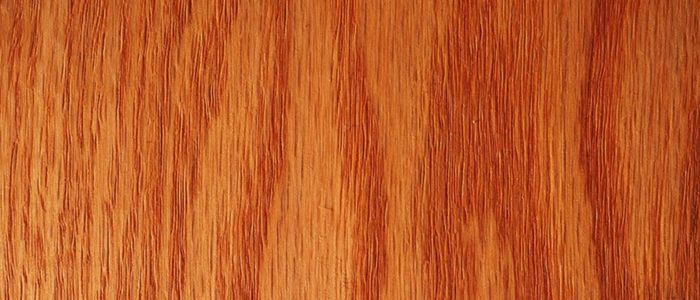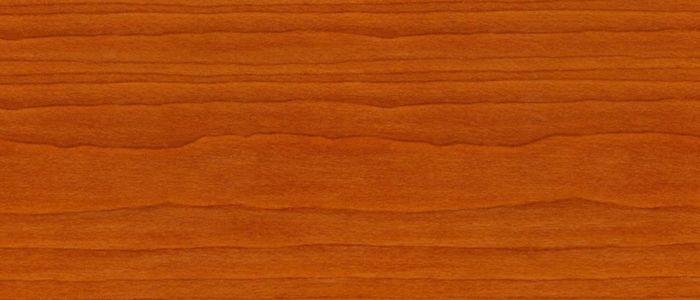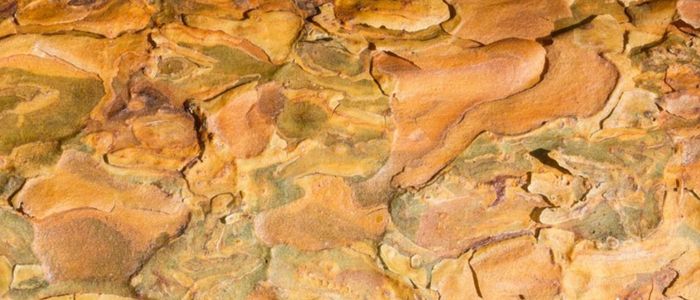The degree of hardness is among the most straightforward ways to differentiate furniture wood. Contrary to what many believe it isn’t necessarily heavier and denser than softwood. In terms of botanical terminology, hardwood originates from flowers while softwood is derived out of conifers. Both can be used for anything from decorative to structural purposes.
Hardwood vs Softwood
| Hardwood | Softwood |
| Hardwood is derived from angiosperm deciduous trees. | Softwood is derived from coniferous evergreen trees. |
| It is characterized by rough wood texture. | It has a rough wood texture. |
| A vessel’s presence makes it porous | A lack of vessel renders it not porous. |
| Tracheid content ranges from the range of 5%- 10%. | Tracheid contents range from 90%-95 percent. |
| The intricate anatomical structure makes hardwood harder to break down. | The less intricate anatomical structure of softwood makes it less dense. |
| Certain kinds of wood are suitable to make furniture. Because they’re expensive, they’re mostly used in luxury furniture production. | The majority of kinds of softwood are suitable to make furniture. In reality, around 20% of the wood is made from softwood. |
Hardwoods
I. Mahogany

Mahogany is among the most well-known tropical hardwood trees. The Mahogany hardwood is much sought-after because of its beauty, durability, and color. It’s largely free of pockets and voids. The color gets darker over time. This is why it’s a popular color for furniture.
- Color – Brownish red to blood Red.
- Density Moderate texture, moderately weight.
- Grain – Straight.
- Common Uses – Furniture of the highest quality interior millwork windows, doors for exteriors, and trimming.
- Finishing Sanding sealer.
II. Walnut

is a popular wood for furniture. (black walnut) is among the most sought-after hardwoods used for furnishings in the U.S. The stability of its dimensions and shock resistance, durability, and deep coloration are the main factors that have led to its popularity.
- Color – Lighter and lighter brown, then a darker chocolate brown, with dark brown streaks. Sapwood appears pale, yellowish-gray, to almost white.
- Density – Medium texture quite light.
- Grain Open grain – Moderately.
- Common Uses High-end furniture carving, flooring accents musical instruments, as well as gun stocks.
- Finishing – Must be completed with polyurethane based on oil.
III. Red Oak

The oak trees of the northern part of the hemisphere. There are about 600 varieties of oak, both evergreen and deciduous. Oakwood is extremely sturdy as well as heavy and durable. It also is resistant to fungal attack.
- Color – Red to pinkish blonde
- Density – Extremely tough and durable.
- Grain – Variety grains with open pores.
- Common Uses – Furniture, cabinets, molding, trim, flooring, paneling, turning.
- Finishing Oil or natural finish, however, they can differ.
IV. Ash

Ash trees are medium-sized to large trees that are found throughout the world. Ashwood is soft to feel. It’s tough, durable, and flexible. It is great nailing, screw-holding, and gluing capabilities. This is why carpenters prefer working with Ashwood. But, it creates an unmistakable and mildly unpleasant smell when working with it.
- Color – Light, creamy-brown.
- Density – Strong, flexible.
- Grain – Open-grained, with occasional brown streaks.
- Common Uses Floors, millwork boxes/crates, baseball bats, and other objects that are turned into tool handles.
- Finishing – Includes all the finishes.
V. Birch

Birch trees are prevalent across The Northern Hemisphere. Although it has a close relationship to Oakwood it is more difficult. The Birch plywood is most likely the most popular as it is strong, durable cheap, and readily accessible.
- Color Color Heartwood is a light brownish red with almost white sapwood.
- Density: Hard, medium weight.
- Grain – Most often either straight or slightly curly and with tiny pores.
- Common Uses: Plywood boxes, crates, and cabinets, turned objects seating furniture, millwork, furniture doors for the interior.
- Finishing – Requires all the finishes.
VI. Maple

The maple trees are mainly indigenous to Asia. However, they can also be present across Europe, North Africa, and North America. It is strong and resistant to splitting and long-lasting. It is easy to clean with a damp sponge, making it perfect for kitchen furniture.
- Color – The color of the heartwood is generally a darker shade of reddish brown. Sapwood colors range from transparent to an off-white creamy shade. It can also be golden or reddish.
- Density – Moderately tough but still strong.
- Grain – Closed and usually straight, although it could be wavier.
- Common Usages – Everything from furniture and woodenware to floors and millwork.
- Finishing – Includes all the finishes.
VII. Cherry

Cherry wood is derived from the cherry tree. Cherry wood has a deep color, smooth grain, and is pliable, which makes it a sought-after choice by furniture makers. It is also able to steam and is ideal to be used in curving designs.
- Color The color is a light brownish pink when cut fresh. It gets darker and becomes medium reddish brown with time.
- Density – Strong, stiff medium-weight, as well as moderately tough.
- Grain – Straight and closed.
- Common Uses: Cabinetry, fine flooring, furniture Interior millwork, veneer, musical instruments paneling, turned objects, and other small wood items of a specialty.
- Finishing – Natural to light finishes are advised.
VIII. Beech

The Beech tree is deciduous, and indigenous to the temperate regions of Europe, Asia, and North America. Beechwood is very robust and resistant to shock and abrasion. Since beech is as flexible as ash does, carpenters are enthralled in working with this kind of wood. It also gives a classy and modern design for furniture. It is however not dishwasher-safe.
- Color – Reddish to pink brown sapwood, the heartwood is soft to pink.
- Density – Extremely strong and heavy.
- Grain – Straight, with an extremely fine to a medium-sized uniform texture.
- Common Uses Backs and legs of chairs pallets, railroad ties, crates/pallets and flooring, food containers as well as musical instruments, toys, and woodenware.
- Finishing – Requires all the finishes.
IX. Teak

Teaks are tropical hardwoods that are native in India, Myanmar (Burma), and Thailand. Teakwood is among the most durable and hardiest of all the natural woods. It is impervious to rot, sunlight, frost, rain, and snow, which makes it ideal for outdoor furniture and construction. It is however expensive and can be difficult to locate.
- Color The color of Heartwood is either golden or medium brown, and it gets darker with age.
- Density – It’s solid and heavy.
- Grain Straight. Sometimes, it may be interlocked or wavy.
- Common Uses Boatbuilding, furniture, veneer, and exterior construction, as well as carving and turnings.
- Finishing – Best finished by using wood lacquer.
X. East Indian Rosewood

The rosewood tree grows in tropical regions, which includes countries like Brazil, India, and Madagascar. The wood is strong when dried correctly. It is characterized by chalky white deposits which can make tools dull and cause issues when finishing. It is however one of the strongest woods.
- Color The color of Heartwood can range between golden brown and purplish brown and darker streaks of brown.
- Density: Heavy, hard, and sturdy.
- Grain – usually narrowly interlocked.
- Common Uses: High-end furniture music instruments, veneers, and turned wood items.
- Finishing – It finishes well, but it needs initial seal coats.
Softwoods
I. Parana Pine

Parana pine trees, also known as Brazilian pines are indigenous to the southern Americas, particularly Brazil. Parana pine is free of pitch pockets, resin ducts, or pitch streaks. It has a greater shear strength and nail-holding capacity in comparison with other, softwoods. It does, however, tend to expand and shrink in drying and compression.
- Color Color Heartwood is medium to light brown, typically with streaks of red. Sapwood appears yellow.
- Density – Soft but not hard.
- Grain: Straight, uniform.
- Common Uses framing wood, internal work doors, sashes furniture case goods, and veneer.
- Finishing – It finishes well, but it needs initial seal coats.
II. Eastern White Pine

Eastern white pine trees can be found plentifully found in the eastern part of North America. It is among the most sought-after timber species. Eastern pine wood changes to gold when exposed to light over some time. When dried properly, it will become solid. But, it’s quite porous. Therefore, it can form a cup if it is exposed to excessive water. It’s relatively affordable and easily accessible.
- Color: Heartwood is light brown with a slight reddish hue. Sapwood is a light yellow that can be nearly white.
- Density-Soft and light.
- Grain Straight and straight and. However winter and summer wood has an important difference.
- Common Uses Exterior millwork furniture, moldings, furniture carvings, and paneling patterns.
- Finishing – Finishes beautifully, however, it must be sealed using water-based or polyurethane based on oil.
III. Lodgepole Pine

The lodgepole pine tree is commonly located in the western part of North America and Canada. The trees can have an age of three hundred years. old. However, they can’t usually as they are prone to attacks by bark beetles. The wood’s tangential surface displays numerous dimples, particularly when stained. This is why it’s the most popular material for paneling.
- Color Heartwood is light reddish-yellowish while sapwood appears yellowish-white.
- Density – It’s moderately strong and light. However, it is heavier than the eastern white pine.
- Grain – Straight
- Common Uses – Excellent for building lumber or plywood. It is also used for paneling. It can also be used to make windows, doors, furniture mine props, railway ties as well as a fence post.
- Finishing – Finishes beautifully, but it needs to be sealed with water-based, or polyurethane based on oil.
IV. Pitch pine

Pitch pines are native to the eastern region of North America. They can reach 50 to 60 feet tall, with a trunk measuring three inches in size. The wood is immune to abrasion and fire. The high content of resin helps to prevent decay.
- Color Color Heartwood is a reddish brown while the sapwood is a yellowish white.
- Density – Soft and light.
- Grain Straight Grained.
- Common Uses Construction, plywood wood pulp shipbuilding, fences railroad ties, and veneers.
- Finishing – Finishes beautifully, but it needs to be sealed using water-based or polyurethane that is oil-based.
V. Scots pine

trees originate from northern Europe along with Asia. They are vulnerable to the blight of the red band needle. Scots pine is one of the hardest softwoods you can find. It is also extremely resinous. It is less durable but isn’t at risk of lyctid borer.
- Color Its color Heartwood is a light reddish brown. Sapwood varies between pale yellow and almost white.
- Density – Reasonably robust and light.
- Grain Straight-grained.
- Common Uses – Construction boxing, poles, panels flooring, internal joinery.
- Finishing – Finishes beautifully, however, it must be sealed with water-based, or oil-based polyurethane.
VI. White Spruce

All kinds of trees belong to the northern temperate as well as boreal (taiga) regions. They are also widespread across the mountain ranges of the continent of Europe. White spruce wood is a great turner into planes, planes, and forms beautifully. It is extremely capable of screwing and nailing. It is, however, not very resistant to decay.
- Color Its color Heartwood has a creamy white, with a light yellow or red-brown. It’s not distinctive from the sapwood.
- Density – Moderately tough.
- The grain is fine and generally straight.
- Common Uses – Pulpwood joining lumber for construction millwork and crates.
- Finishing – It’s nice however when you are using a sanding sealer, gel stain or toner is suggested.
VII. Red Cedar

Red cedar is the most common name used for a variety of cedars found within the east United States region. Its red-colored wood (also called the aromatic red cedar) is extremely resistant to decay and insects. It’s highly aromatic, and it can be planned and cut easily. But, it has moderate nail and screws holding properties.
- Color The color of Heartwood is usually either violet or red. Sapwood is light yellow or lighter in color.
- Density – Hard texture and light.
- Grain Straight grain, with many knots.
- Common Uses Fence posts, chest and closet liner, carvings, and outdoor furniture such as birdhouses, pencil bows, closet interiors, and small wooden items for special occasions.
- Finishing is a breeze However, oil-based finishes are suggested.
VIII. Fir

These trees are found across the majority of North as well as Central America, Europe, Asia as well as North Africa. They are usually found within the mountain ranges. It is characterized by moderate shrinkage and stability. It is also sturdy and flexible.
- Color Color Sapwood is a yellowish-reddish-white to reddish color. Fresh heartwood may range from yellowish brown to reddish yellow in color. But, it quickly darkens to a dark red to brown-red.
- Density: Medium-weight and quite tough.
- Grain – Plain and straight Sometimes waving.
- Common Uses Veneer as well as plywood as well as construction timber.
- Finishing – Looks great. But, it is important to consider the high amount of sap which could require the application of a coating of paint.
IX. Larch

Larch trees originate from the cooler northern hemisphere. Larch wood is moderate to severely immune to attack by fungal organisms. It is nevertheless strong and extremely resistant to pests and rot because of the presence of natural resins. While knots are not uncommon but they tend to be tiny.
- Color Color Heartwood is medium to dark reddish brown. Sapwood is nearly white.
- Density – Excellent strength and moderate weight.
- Grain Straight or spiraled with an oily texture.
- Common Uses Veneer utility poles, fence posts, flooring boatbuilding, interior, and exterior joinery, as well as construction lumber.
- Finishing – It is recommended to seal before finishing to stop bleeding through.
X. Western Hemlock

The Western Hemlock species is indigenous from the western coasts and west coast of North America, growing in the rainforests along the coast that are located in Alaska along with British Columbia. It has a high strength-to-weight ratio. It can be turned or plane and form effortlessly. It has moderate nail and screw-holding capacity. It is also known for its resistance to termites. However, outdoor use requires an excellent finish to avoid rapid decay.
- Color The color Heartwood is a light reddish brown. Sapwood is lighter in hue.
- Density – Light and soft.
- Grain Straight, with rough with uneven textures.
- Common Uses Boxes and pallets, crates and pallets frame, plywood cabinets, joinery, and millwork.
- Finishing – Reacts best to clear, uncolored finishes.
XI. Yew (European Yew)

The yew tree is native to central, western, along with southern Europe. The heartwood of the tree is extremely tough and long-lasting. The finest wood, however, comes from the trees that are found in areas of mountainous terrain. It’s also very elastic. It is able to easily stretch, bounce back and be durable. It also is resistant to most insects.
- Color The color Heartwood is an orangish brown, deeper brown, or a purplish shade. Sapwood is typically thin, with light yellow or tan hue.
- Density – Flexible, soft as well as moderately heavy.
- Grain straight, and with a smooth consistent texture.
- Common Uses Bows (archery) and veneers furniture, cabinet making carvings, musical instruments.
- Finishing – Finishes beautifully, but it needs to be sealed with water-based, or oil-based polyurethane.
Hardwood or Softwood, both are good for the kiln drying process to bring out their best potential and make the wood more usable and workable. If you have any questions about the Kiln Drying or Vacuum Drying process, don’t hesitate to contact us.

